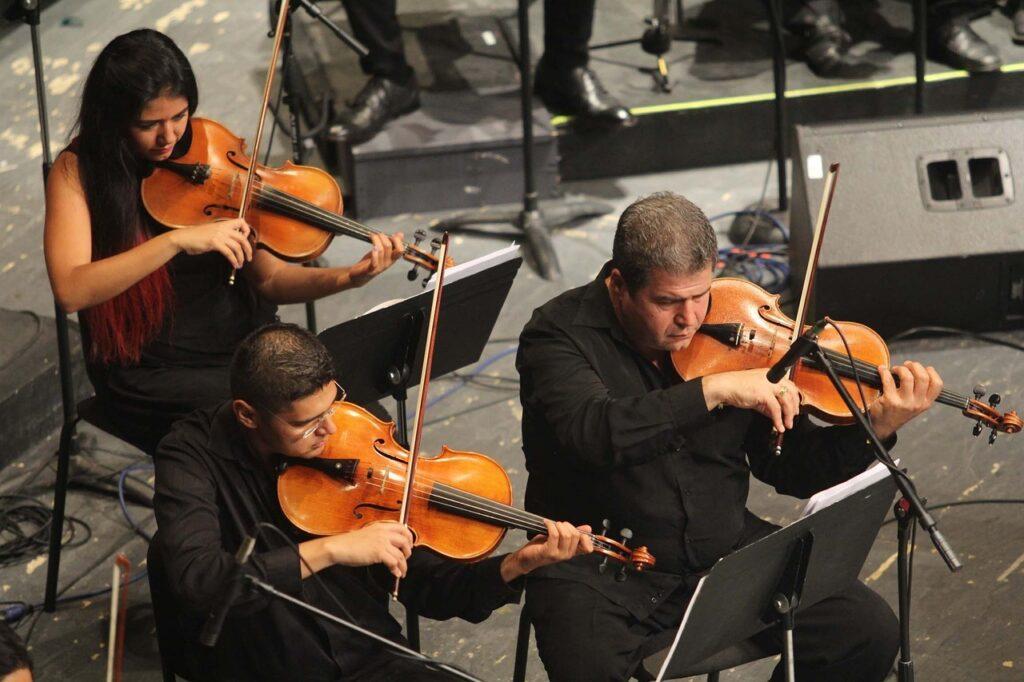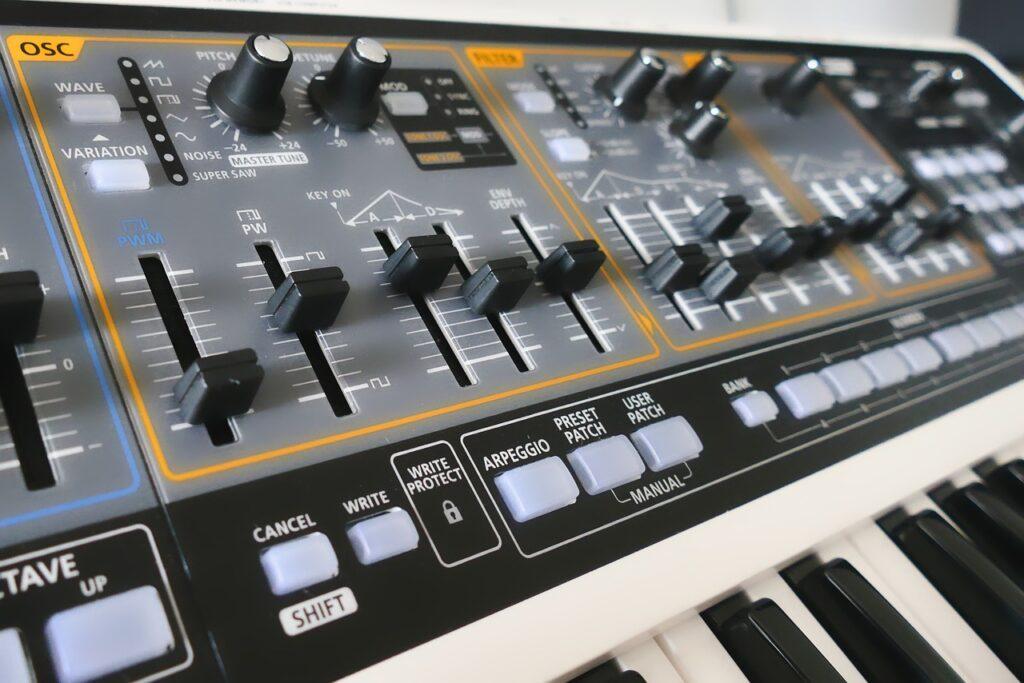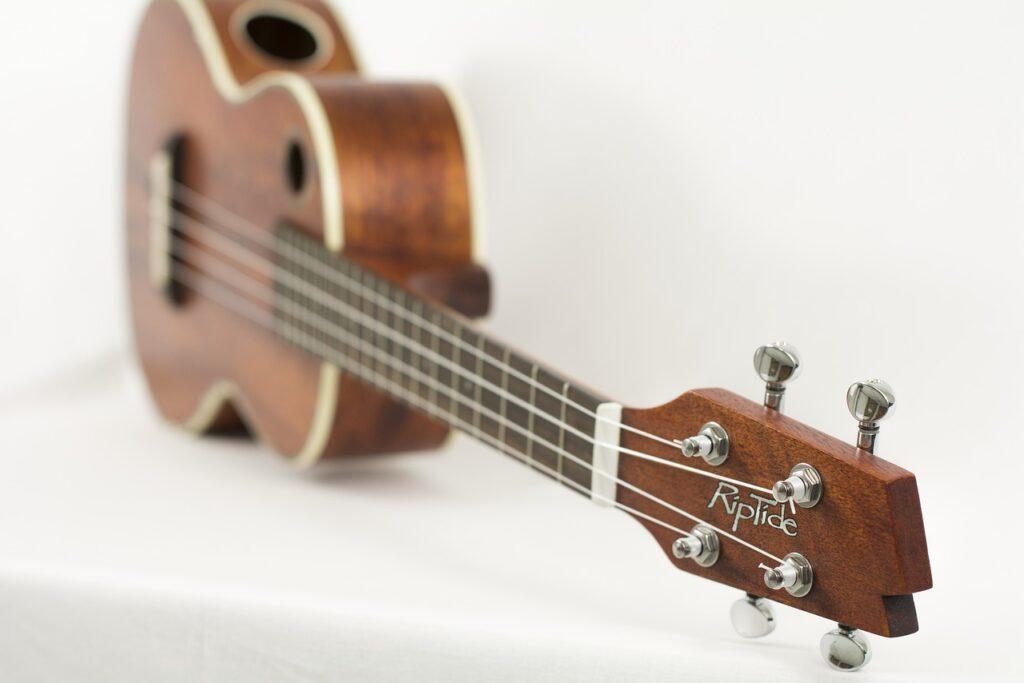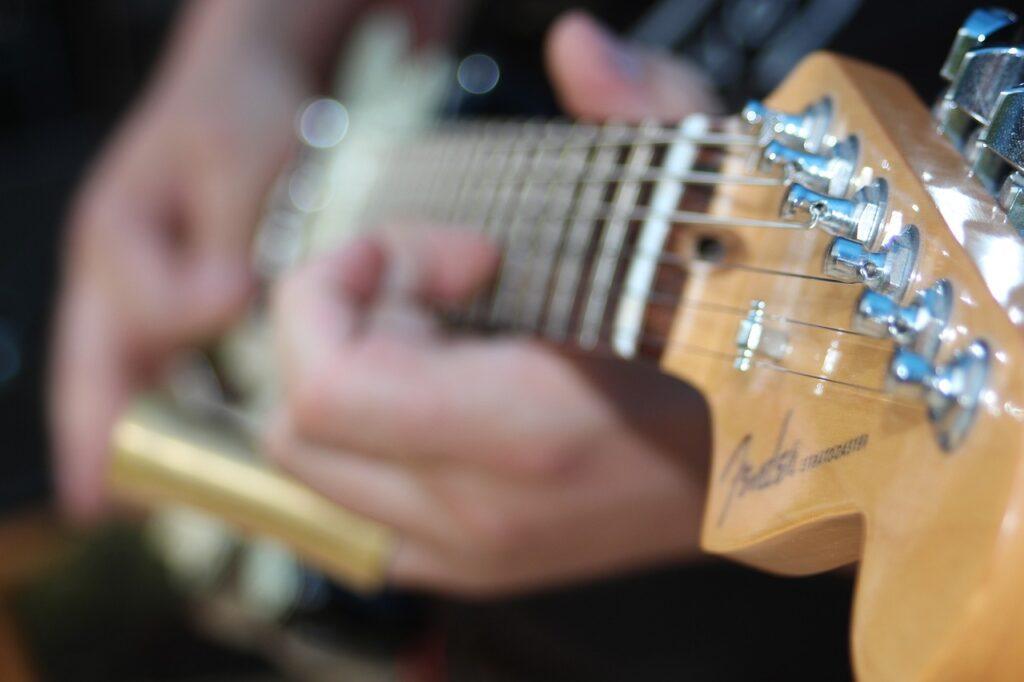Intonation

Intonation & More
The Blog Category Is Expanding:
I’ve expanded the blog category to include “Basic Acoustics,” “Intonation Music Theory,” and “World Music” topics in addition to the posts about guitar and keyboard intonation.
Tuning Up:
The following posts mostly talk about retuning guitars and micro tuning keyboards.
What’s intonation? It’s retuning guitars and micro tuning synths.
The guitar posts explore music played with open tunings. Moreover, we will look at styles such as rock, blues, folk, country, and Hawaiian.
Tuning with harmonics allows the guitar open tunings to have better sounding chords than the same open tunings tuned using frets or a standard electronic tuner. Nevertheless, the pattern of harmonics for the open tunings looks different than the pattern of harmonics for standard tuning.
The synth posts focus on micro tuning the synth using Supplemented Equal Temperament (SET). I created SET to have better sounding chords that equal temperament (the piano’s tuning). However, it still works with normal, unmodified instruments reading standard sheet music and regular tab.
In other words, pop and other music groups can tune synths and guitars to SET. When tuned to SET, flexible pitch instruments can play with the SET tuned guitar and synth. Specifically, the flexible pitch instruments include the violin, brass, woodwinds, and voice.
Equal tempered instruments can play at least some notes with the SET tuned guitar and synth. Specifically, the fixed pitch equal tempered instruments include the piano, organ, and xylophone. However, most percussion instruments do not need special tunings. Taken together, this makes the SET ensemble.
The Intonation Posts
The cornerstone category article:
The cornerstone category article is a longer article and more technical. The post defines intonation, and discusses microtonality verses tuning theory. Also, it talks about on how SET was formed, and some of the science that went into its creation.
The posts can be further broken into guitar, synth, ensemble, etc.
Guitar, etc.:
Online Guitar and Ukulele Tuners:
Synth:
Ensemble:
Intonation Music Theory:
World Music:
Basic Acoustics:
The previous topic lists will be updated periodically. See the post grid below for the full list and full descriptions with featured images.
– Geoffrey Keith
© 2021 Geoffrey Keith
Back to the Successful Music Student Blogs page
Do you want a better understanding of musical pitch? In the field of music, there exists a relationship between acoustics, music pitch, and sound vibration frequencies. From the moving passages of a string quartet to the driving pulse of a rhythm section, life is filled with an enormous array of musical sounds that you can enjoy. Keep reading to learn how music pitch works. Estimated reading time 3 minutes.
Basic Acoustics, Music Pitch, and Sound Vibration Frequencies Read More »
Have you ever wondered why a chord works with one instrument’s tone color (or a particular timbre of voice) but not another? Do you want to know what to listen for when tuning up your chords? Timbre and harmony are intimately related and understanding that relationship will deepen a composer’s knowledge of music. Also, it’ll help vocals, woodwinds, brass, and violins to know what to listen for when tuning up chords. Keep reading to learn the secret relationship of timbre and harmony. Estimated reading time 3 minutes.
Learn the Secret Relationship of Timbre and Harmony Read More »
Do you need simple instructions for tuning a keyboard to meantone temperament? Meantone tuning is a temperament from Mozart’s time. It allows you to have an authentic sound when playing music from the classical period. Keeping reading “Meantone Tuning (Simple Instructions)” to learn how to get this sound. Estimated reading time 2 minutes.
Meantone Tuning (Simple Instructions) Read More »
Do you want to try out open G tuning, but don’t know where to start? While G tuning has a wonderfully resonant quality, there are still some things you need to think about before you begin learning these alternate guitar tunings. Keep reading “What’s the Catch with G Guitar Tuning?” to find out what makes it both captivating and challenging at the same time. Estimated reading time 2 minutes.
What’s the Catch with G Guitar Tuning? (Open G Tuning) Read More »
Do you want to tune the ukulele with a free online tuner? If you’d like to get your ukulele into the standard ukulele tuning in equal temperament, don’t worry, I have what you need. However, did you know that the Hawaiians tune their instruments so that their ukes sound a lot better? Click to tune up the most common versions of the tuning. Estimated reading time 4 minutes.
Tune the Ukulele with a Free Online Tuner Read More »
Do you want to tune your guitar online? If you want to tune your guitar to normal standard tuning in equal temperament, I’ve got you covered. However, did you know that professional guitarists have other ways of tuning standard guitar tuning to make their guitars sound better? Read “Guitar Tuner Online: Standard Guitar Tuning” to learn eight versions of standard tuning. Estimated reading time 4 minutes.
Guitar Tuner Online (Standard Guitar Tuning) Read More »
“What is the point of different alternate guitar tunings?” Alternate tunings change both how the instrument sounds and how it feels as you play it. They say that cloths make the man. Likewise, how the guitar gets tuned can make the guitarist. Read more to find out some of the advantages of alternate tunings. Estimated reading time 3 minutes.
What Is the Point of Different Alternate Guitar Tunings? Read More »
Have you ever tuned your guitar, using the frets or an electronic tuner, only to find that it still sounds off when you start strumming? Many guitarists have noticed this problem. However, you can learn how to make your guitar sound better! Read more to find out, “Why does my guitar sound off tune?” Estimated reading time 2 minutes.
Why Does My Guitar Sound Off Tune? Read More »
How many of you want to know how to tune with guitar harmonics? Tuning using the 5th and 7th fret harmonics is the most common way to fine-tune standard tuning on the guitar. It yields better sounding chords than tuning using frets. However, it doesn’t restrict what you can use for open chord forms. Read more to learn how it works. Estimated reading time 3 minutes.
How Many of You Want to Know How to Tune with Guitar Harmonics? Read More »
Do you want to understand advanced heterophony concepts? How does timbre affect heterophony in the ma’luf ensembles? Many cultures organize their music by using heterophony which forms the music in essentially different ways than harmony-based music. Keep reading to understand the relationship between heterophony and timbre. Estimated reading time 3 minutes.
Advanced Heterophony Concepts – Part 1 Read More »











